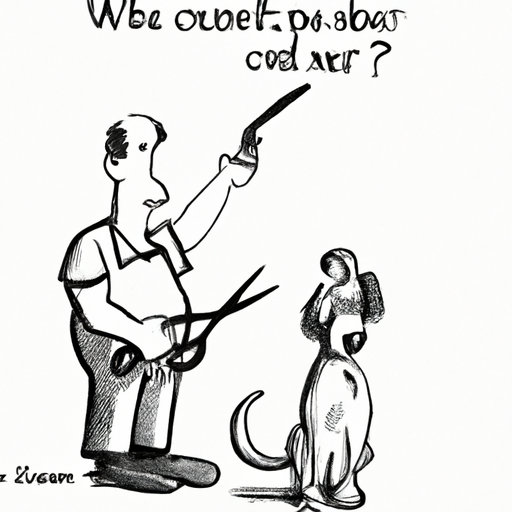“`markdown
Why Do Dogs Get Their Tail Cut Off?
The History of Tail Docking
You may have noticed that some dogs have shorter tails than others. This isn’t always a natural occurrence. In fact, this is often the result of a procedure known as tail docking. Tail docking, a practice dating back to the Roman times, was initially done for perceived health, safety, and cosmetic reasons. It was believed that docking the tails of working dogs helped prevent injuries, rabies, and enhance their backs’ strength.
- Rabies Prevention: In the ancient belief system, tail docking was thought to prevent rabies.
- Injury Prevention: For working dogs, a long tail was seen as a liability that could get stuck in doors or machinery.
- Cosmetic Reasons: In some breeds, a docked tail came to be seen as the standard look.
The Procedure of Tail Docking
Tail docking is performed on puppies between the ages of 3 and 5 days old. At this age, the puppy’s tail is still soft, and the procedure causes minimal pain.
- The Banding Method: A rubber ligature is used to cut off the blood supply to the tail. The tail then falls off after a few days.
- The Surgical Method: The tail is surgically removed using a scalpel or surgical scissors.
Countries Where Tail Docking is Banned
Several countries have recognized the unnecessary pain and potential complications caused by tail docking and have implemented bans on the procedure for non-medical reasons.
| Country | Year of Ban |
|---|---|
| Sweden | 1989 |
| Germany | 1998 |
| Australia | 2004 |
| England | 2007 |
The Controversy Surrounding Tail Docking
As you may have gathered, tail docking is a contentious issue. Many animal rights organizations argue that tail docking amounts to unnecessary mutilation. They believe that the procedure causes pain and can lead to complications such as infection or neuroma.
- Animal Rights Perspective: Tail docking is seen as cruel and unnecessary.
- Breeders’ Perspective: Some breeders argue that tail docking is part of maintaining breed standards.
Alternatives to Tail Docking
Fortunately, there are alternatives to tail docking. One of the most effective ways to prevent tail injuries is to provide a safe environment for your dog.
- Safe Environment: Make sure your dog’s living conditions are free of hazards that could injure their tail.
- Breed Selection: Choose a breed with a naturally short tail if you prefer the look.
- Training: Train your dog to keep their tail down in potentially dangerous situations.
Frequently Asked Questions
Q: Is tail docking painful for dogs?
A: While newborn puppies have less developed nerve endings, they still feel pain. The level of discomfort can vary.
Q: Is tail docking necessary for all dog breeds?
A: No, tail docking is not a requirement for all dog breeds. It’s mostly done for cosmetic reasons or to adhere to breed standards.
Q: Can tail docking be performed on an adult dog?
A: Tail docking is usually performed on puppies. It’s riskier and more painful for adult dogs.
“`



